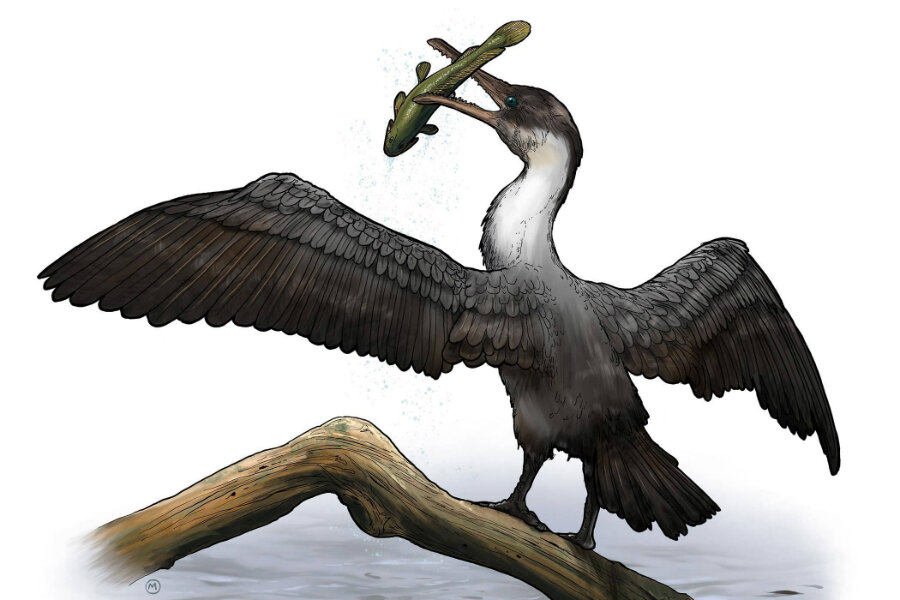Long before Rudolph, these gigantic birds flew around the North Pole
Loading...
A newly discovered species of bird, which lived in the Canadian Arctic some 90 million years ago, may provide more evidence of a large warming event in the Cretaceous period.
The new fossils date to the Turonian age, which lasted from 93.9 to 89.8 million years ago, and are some of the oldest avian records found near the North Pole. In a study published Monday in the journal Scientific Reports, researchers named the specimen Tingmiatornis arctica. In the Inuktitut language of northern Canada, “Tingmiat” means “those that fly.”
“The bird would have been a cross between a large seagull and a diving bird like a cormorant, but likely had teeth,” said lead author John Tarduno, a professor of earth sciences at the University of Rochester, in a statement.
No teeth have been found, but they would have helped a diving bird like this one tear into the large carnivorous fish that filled Arctic waters at the time.
By comparing the new fossil against others from the region, researchers are building a picture of T. arctica’s ecosystem, including species distribution and food chains.
“Before our fossil, people were suggesting that it was warm, but you still would have had seasonal ice,” said Professor Tarduno. “We’re suggesting that’s not even the case, and that it’s one of these hyper-warm intervals because the bird’s food sources and the whole part of the ecosystem could not have survived in ice.”
On the basis of fossil and sediment records from the Canadian Arctic, Tarduno and colleagues speculate that the region’s climate during the Turonian was more like northern Florida today – warm, with turtles, fish, and pseudo-crocodilian reptiles.
But what could have warmed the Arctic to tropical temperatures?
The Tingmiatornis fossils were found in rock layers just above basalt lava fields produced by periodic volcanic eruptions. These Arctic volcanoes could have released enormous volumes of carbon dioxide, and the resulting greenhouse effect could have driven up polar temperatures, the researchers argue.
“The fossils tell us what that world could look like, a world without ice at the arctic,” says Richard Bono, a PhD candidate in earth and environmental sciences and a member of Tarduno’s expedition. “It would have looked very different than today, where you have tundra and fewer animals.”
Biological factors may have also contributed to the greenhouse effect. Large grazing sauropods, such as brontosaurus and diplodocus, were the cows of the Jurassic and Cretaceous. And just as today’s ruminants produce copious amounts of methane, so too did these giants – in fact, their “emissions” may have rivaled modern natural and industrial sources, according to a 2012 study led by British biologist David Wilkinson.
As the Christian Science Monitor’s Pete Spotts reported at the time:
For their estimate, Wilkinson and colleagues settled on 10 22-ton sauropods to every 250 acres of land. Increased warmth, moisture, and CO2 levels would have sustained far more vegetation than does today's climate. Given the behemoths' appetites, the team estimated that all the sauropods on the planet would have produced a combined 520 million tons of methane a year, compared with between 50 million and 100 million tons for today's ruminants.
As for Tingmiatornis, the fossil may also offer clues into the evolution of birds after the age of dinosaurs. Though it's still speculative at this point, researchers say rapid growth and maturation may have allowed the bird to survive the global Cretaceous-Paleogene mass extinction event, which occurred about 66 million years ago.
“These birds are comparatively close cousins of all living birds and they comprise some of the oldest records of fossil birds from North America,” Clarke says. “Details of the upper arm bones tell us about how features of the flightstroke seen in living species came to be.”






